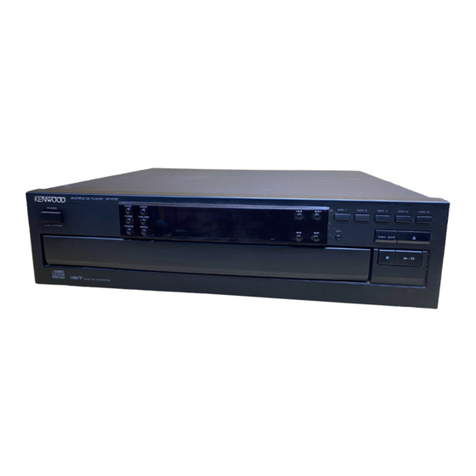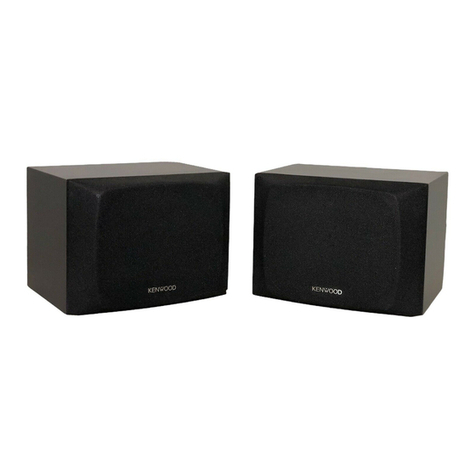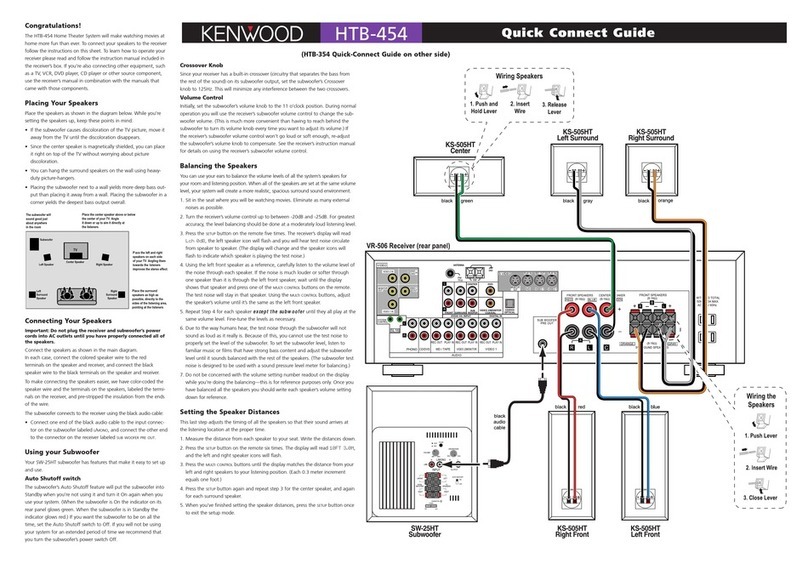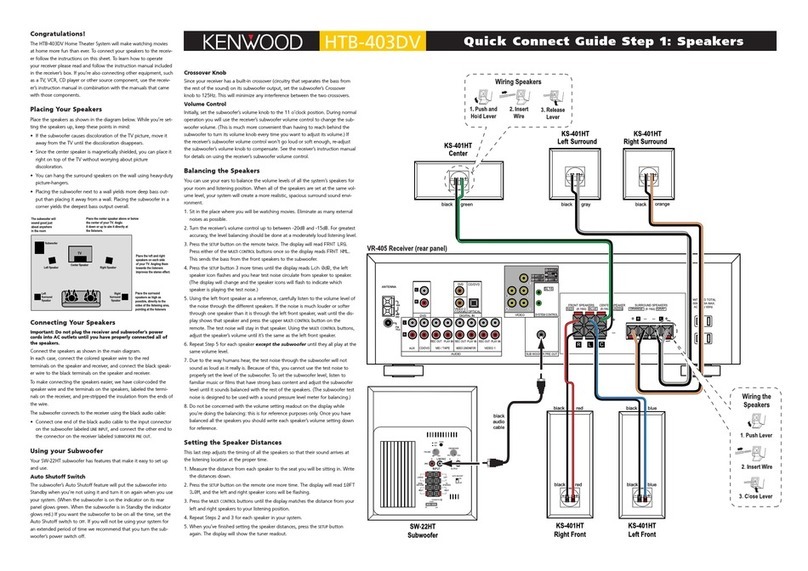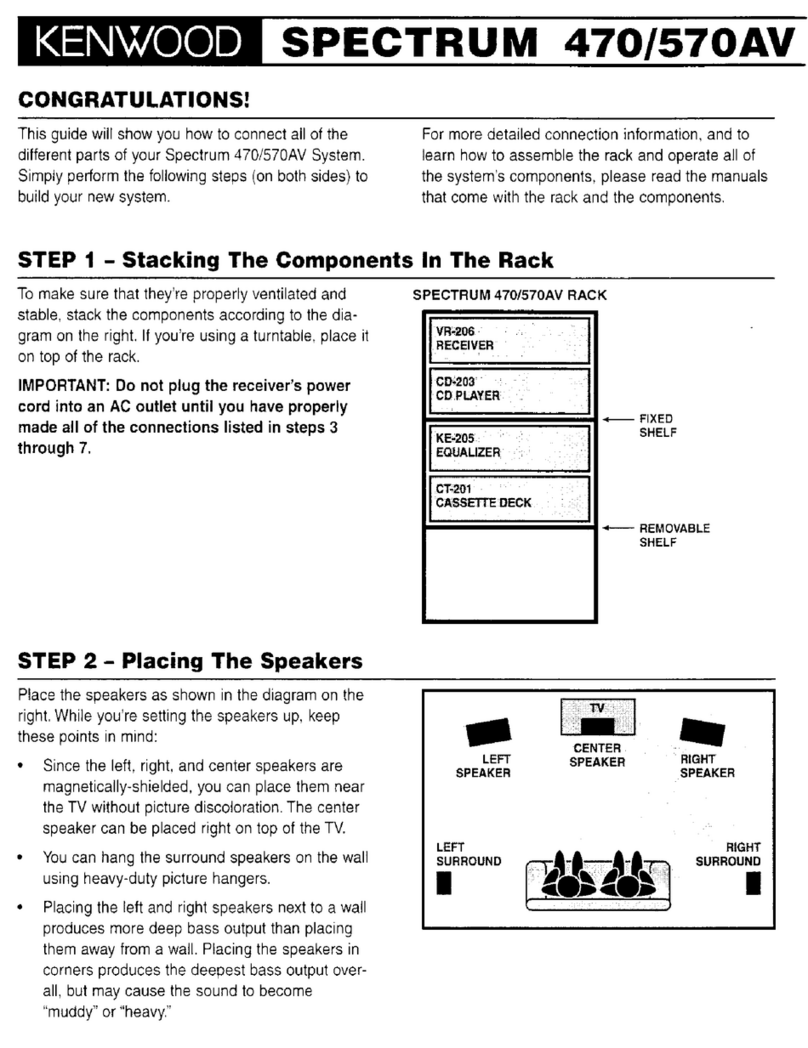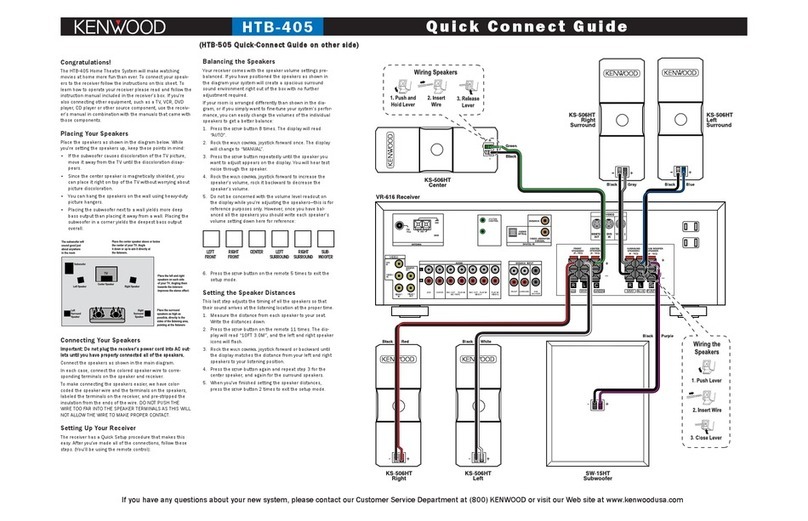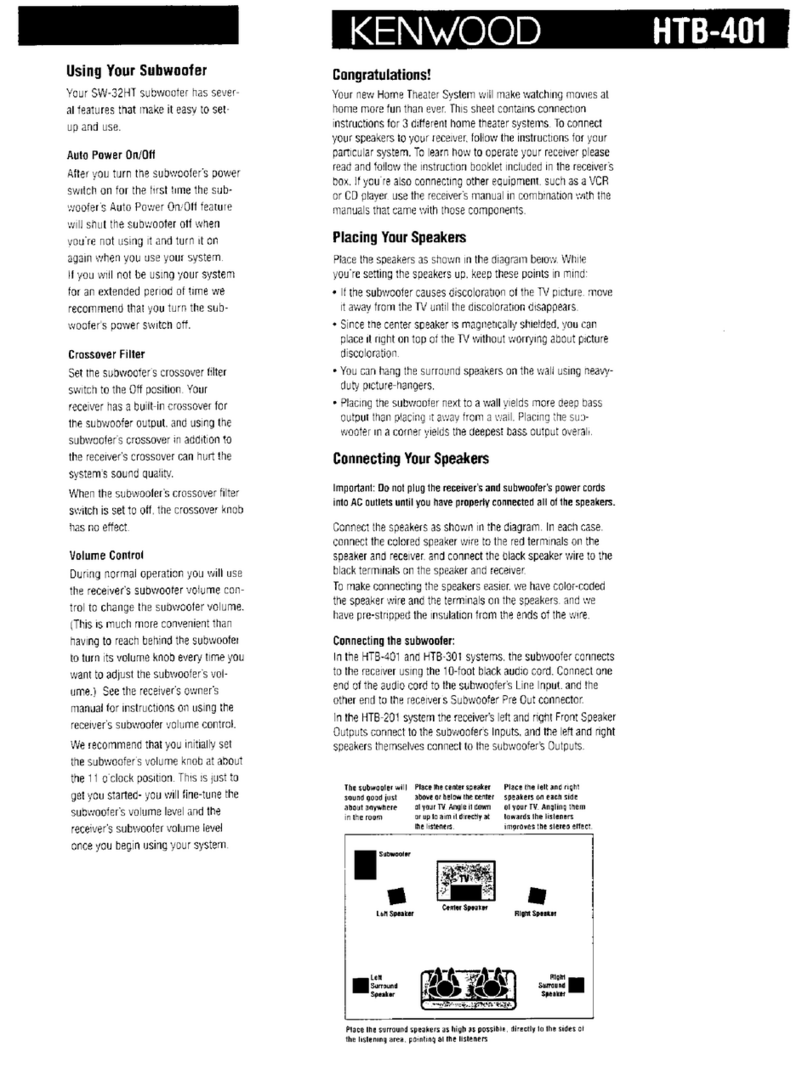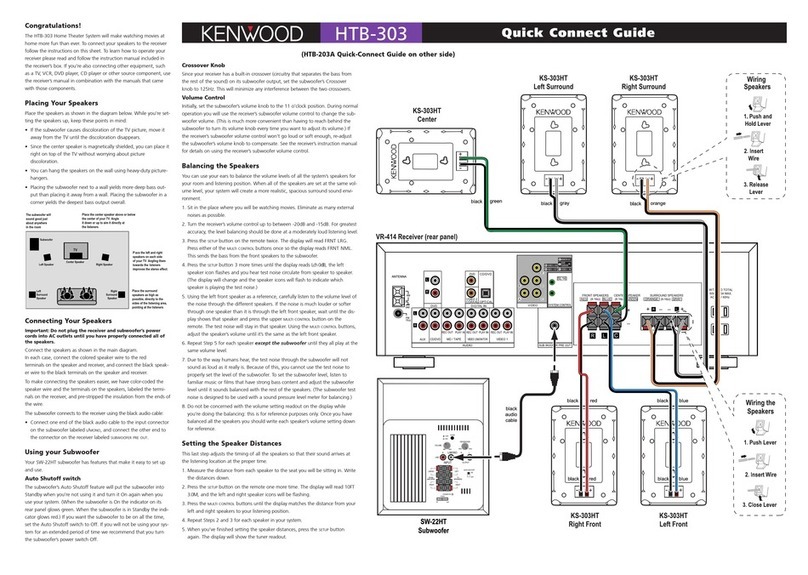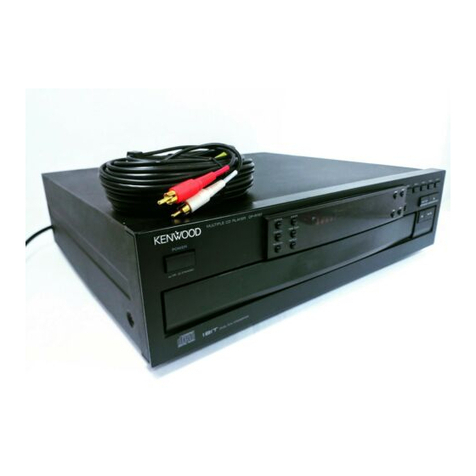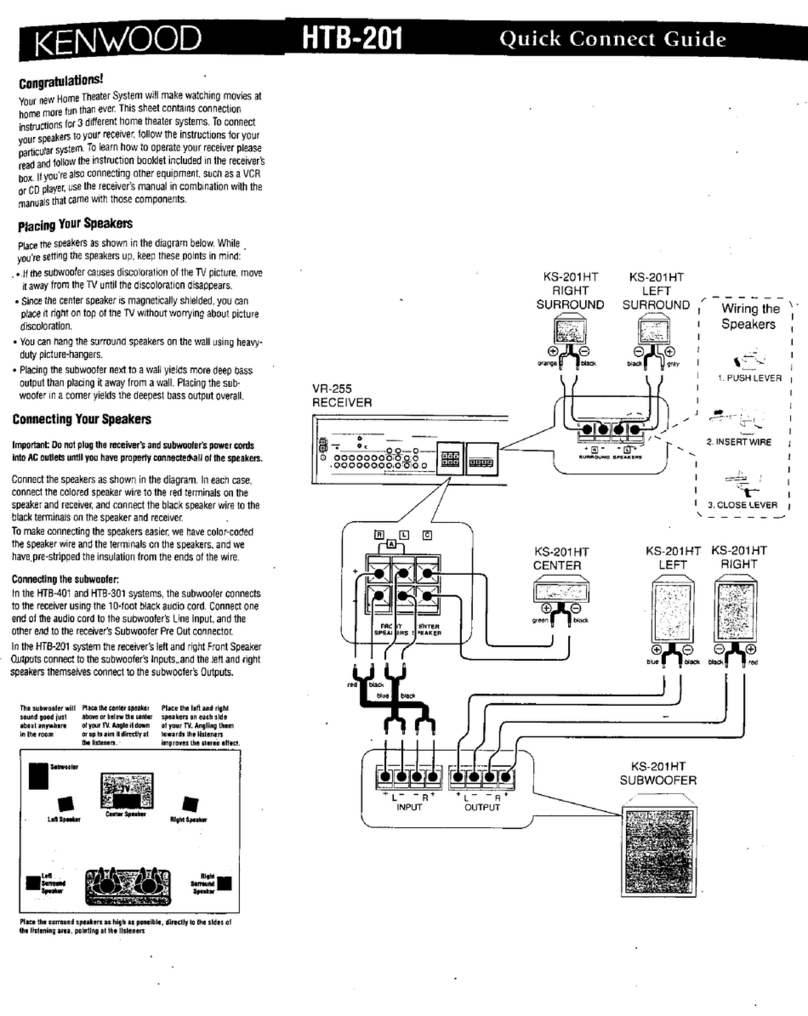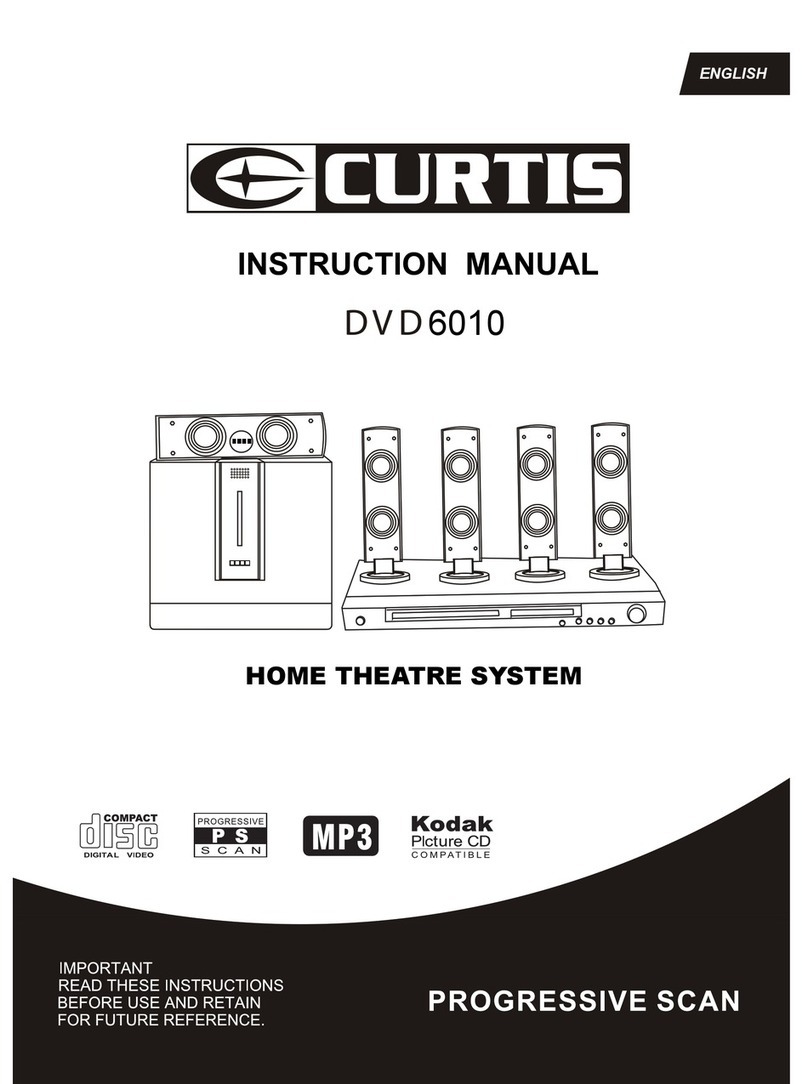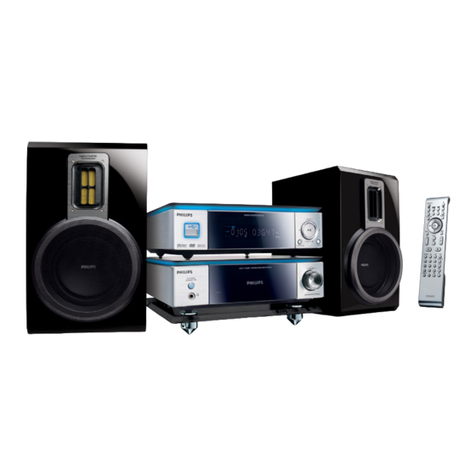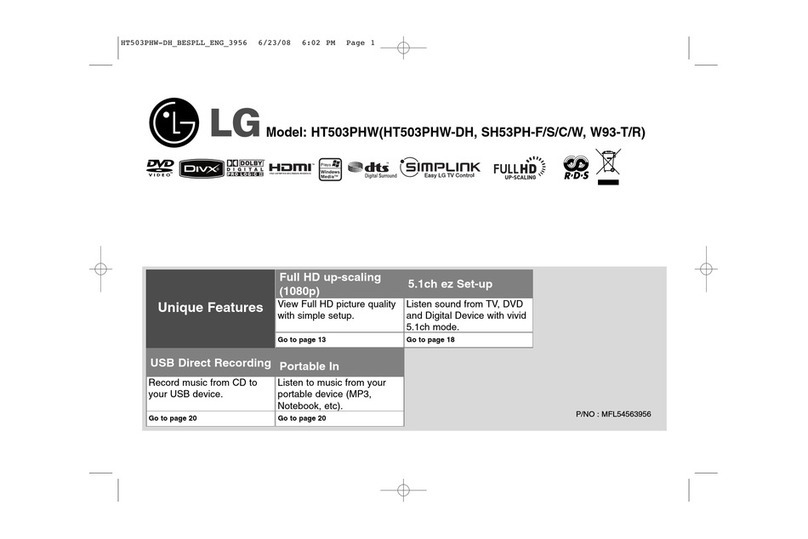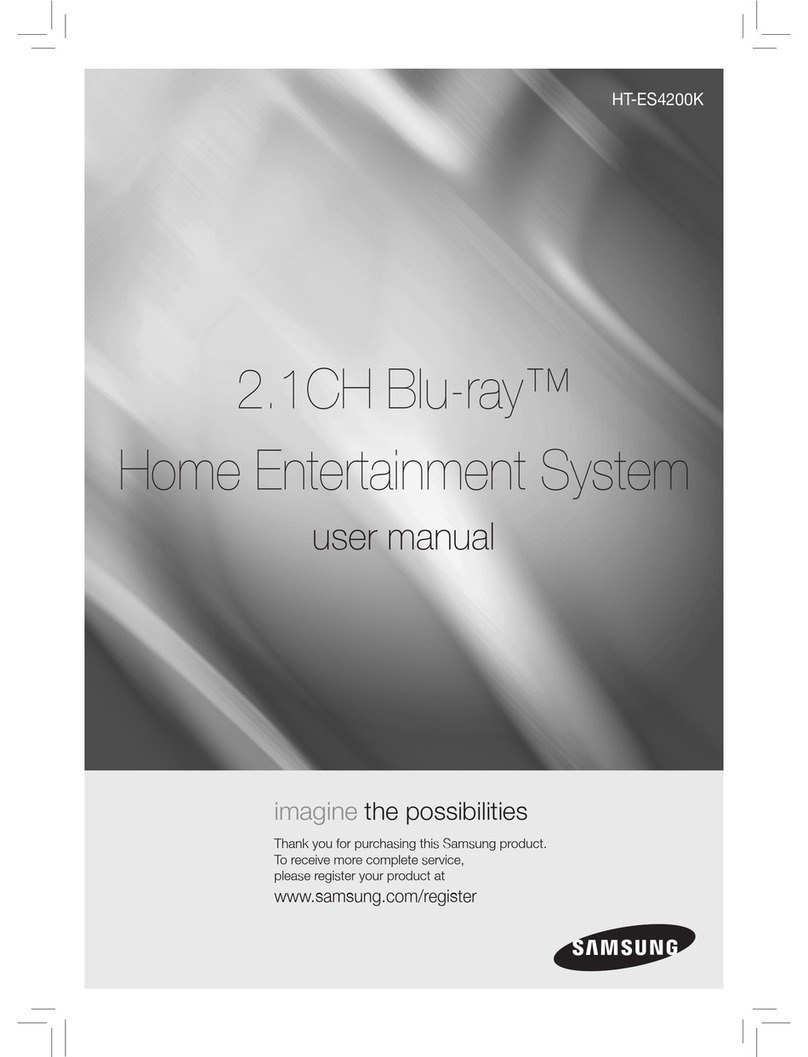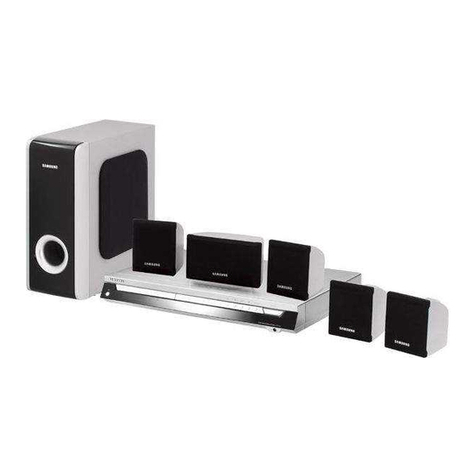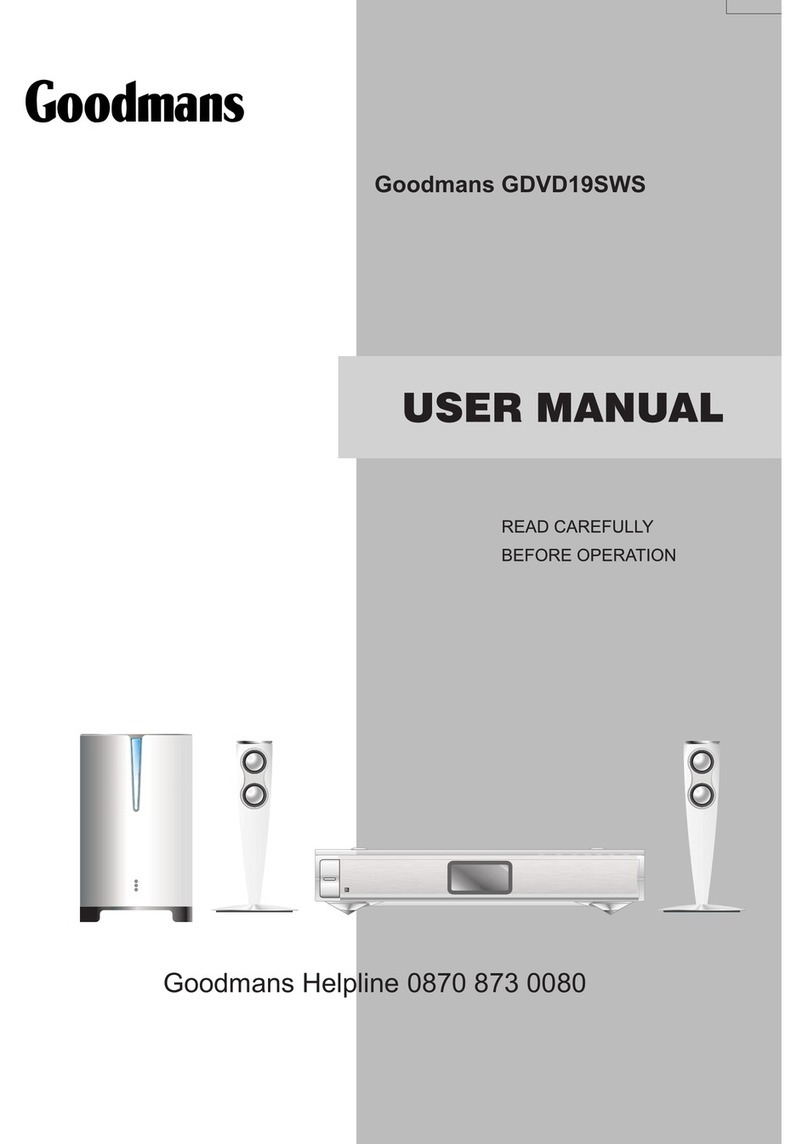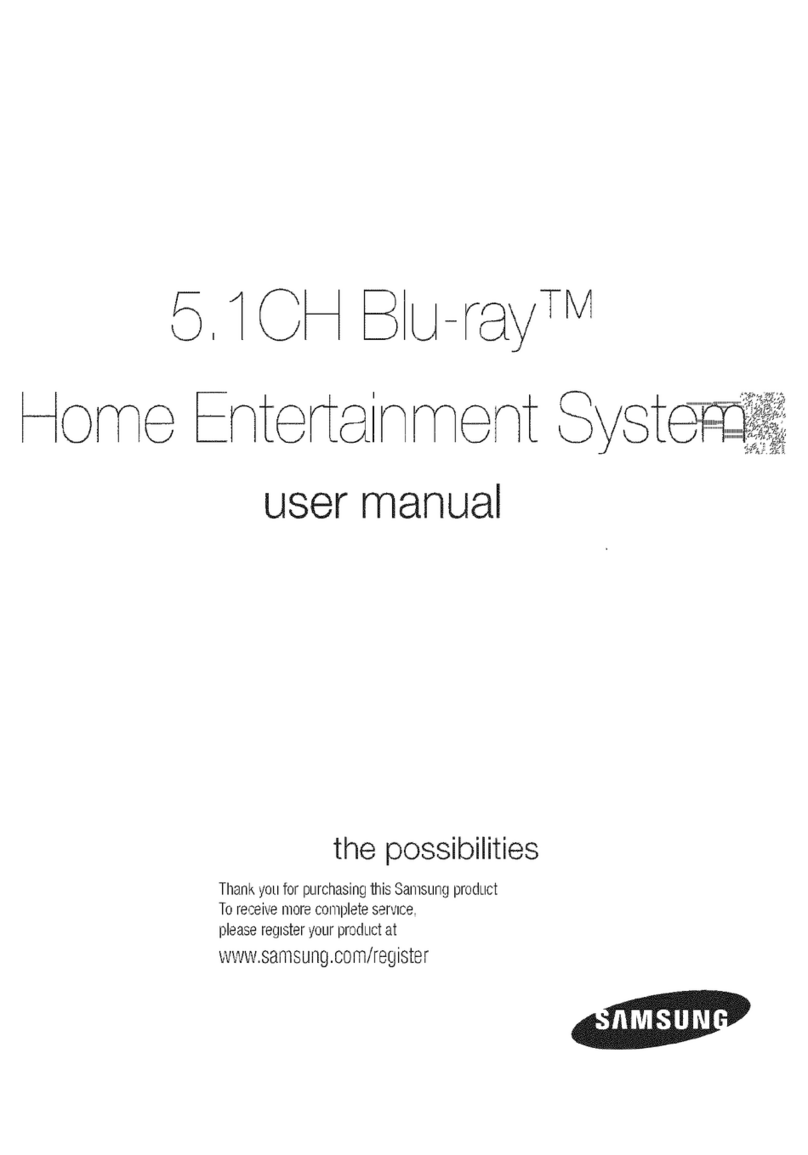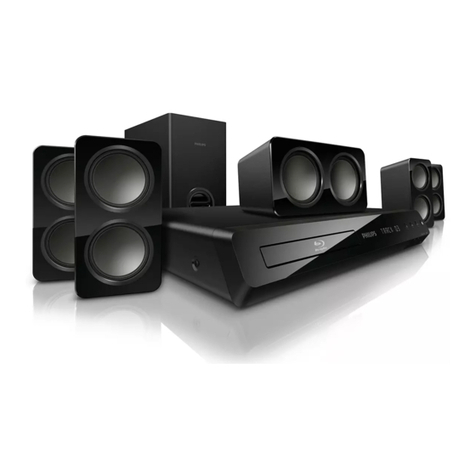Congratulations!
The HTB-504DV Home Theater System will make watching movies
at home more fun than ever. To connect your speakers to the
receiver follow the instructions on this sheet. To learn how to oper-
ate your receiver please read and follow the instruction manual
included in the receiver’s box. If you’re also connecting other equip-
ment, such as a TV, VCR, CD player or other source component,
use the receiver’s manual in combination with the manuals that
came with those components.
Placing Your Speakers
Place the speakers as shown in the diagram below. While you’re
setting the speakers up, keep these points in mind:
• If the subwoofer causes discoloration of the TV picture, move it
away from the TV until the discoloration disappears.
• Since the center speaker is magnetically shielded, you can place
it right on top of the TV without worrying about picture
discoloration.
• You can hang the surround speakers on the wall using heavy-
duty picture-hangers.
• Placing the subwoofer next to a wall yields more deep bass out-
put than placing it away from a wall. Placing the subwoofer in a
corner yields the deepest bass output overall.
Connecting Your Speakers
Important: Do not plug the receiver and subwoofer’s power
cords into AC outlets until you have properly connected all of
the speakers.
Connect the speakers as shown in the main diagram.
In each case, connect the colored speaker wire to the red
terminals on the speaker and receiver, and connect the black
speaker wire to the black terminals on the speaker and receiver.
To make connecting the speakers easier, we have color-coded the
speaker wire and the terminals on the speakers, labeled the termi-
nals on the receiver, and pre-stripped the insulation from the ends
of the wire.
The subwoofer connects to the receiver using the black audio cable:
• Connect one end of the black audio cable to the input connec-
tor on the subwoofer labeled L/MONO, and connect the other end
to the connector on the receiver labeled SUB WOOFER PRE OUT.
Using your Subwoofer
Your SW-35HT subwoofer has features that make it easy to set up
and use.
Auto Power On/Off
After you turn the subwoofer’s power switch On for the first time,
the subwoofer’s Auto Power On/Off feature will put the subwoofer
into Standby when you’re not using it and turn it On again when
you use your system. (When the subwoofer is On the indicator on
its rear panel glows green. When the subwoofer is in Standby the
indicator glows red.) If you will not be using your system for an
extended period of time we recommend that you turn the sub-
woofer’s power switch Off.
Quick Connect Guide Step 1: Speakers
HTB-504DV
Crossover Filter Switch
Since your receiver has a built-in crossover (circuitry that separates the bass from
the rest of the sound) on its subwoofer output, set the subwoofer’s Crossover Filter
switch to Off.
Volume Control
Initially, set the subwoofer’s volume knob to the 11 o’clock position. During normal
operation you will use the receiver’s subwoofer volume control to change the sub-
woofer volume. (This is much more convenient than having to reach behind the
subwoofer to turn its volume knob every time you want to adjust its volume.) If
the receiver’s subwoofer volume control won’t go loud or soft enough, re-adjust
the subwoofer’s volume knob to compensate. See the receiver’s instruction manual
for details on using the receiver’s subwoofer volume control.
Balancing the Speakers
You can use your ears to balance the volume levels of all the system’s speakers for
your room and listening position. When all of the speakers are set at the same volume
level, your system will create a more realistic, spacious surround sound environment.
1. Sit in the seat where you will be watching movies. Eliminate as many external
noises as possible.
2. Turn the receiver’s volume control up to between -20dB and -25dB. For greatest
accuracy, the level balancing should be done at a moderately loud listening level.
3. Press the SETUP button on the remote five times. The receiver’s display will read
Lch 0dB, the left speaker icon will flash and you will hear test noise circulate
from speaker to speaker. (The display will change and the speaker icons will
flash to indicate which speaker is playing the test noise.)
4. Using the left front speaker as a reference, carefully listen to the volume level of
the noise through each speaker. If the noise is much louder or softer through
one speaker than it is through the left front speaker, wait until the display
shows that speaker and press one of the MULTI CONTROL buttons on the remote.
The test noise will stay in that speaker. Using the MULTI CONTROL buttons, adjust
the speaker’s volume until it’s the same as the left front speaker.
5. Repeat Step 4 for each speaker except the subwoofer until they all play at the
same volume level. Fine-tune the levels as necessary.
6. Due to the way humans hear, the test noise through the subwoofer will not
sound as loud as it really is. Because of this, you cannot use the test noise to
properly set the level of the subwoofer. To set the subwoofer level, listen to
familiar music or films that have strong bass content and adjust the subwoofer
level until it sounds balanced with the rest of the speakers. (The subwoofer test
noise is designed to be used with a sound pressure level meter for balancing.)
7. Do not be concerned with the volume setting number readout on the display
while you’re doing the balancing—this is for reference purposes only. However,
once you have balanced all the speakers you should write each speaker’s volume
setting down for reference.
Setting the Speaker Distances
This last step adjusts the timing of all the speakers so that their sound arrives at
the listening location at the proper time.
1. Measure the distance from each speaker to your seat. Write the distances down.
2. Press the SETUP button on the remote six times. The display will read 10FT 3.0M,
and the left and right speaker icons will flash.
3. Press the MULTI CONTROL buttons until the display matches the distance from your
left and right speakers to your listening position. (Each 0.3 meter increment
equals one foot.)
4. Press the SETUP button again and repeat step 3 for the center speaker, and again
for each surround speaker.
5. When you’ve finished setting the speaker distances, press the SETUP button once
to exit the setup mode.
(DVD Player Quick-Connect Guide on other side)
If you have any questions about your new system, please contact our Customer Service Department at (800) KENWOOD, or visit our Web site at www.kenwoodusa.com

